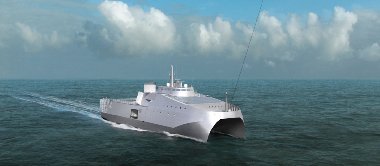Bocoum, Maïmouna (2012) Diffraction X du fer à haute résolution temporelle PFE - Projet de fin d'études, ENSTA.
Fichier(s) associé(s) à ce document :
| PDF 10Mb |
Résumé
La connaissance de l’équation d’état du fer reste mal connue aujourd’hui. Le fer est un élément important en astrophysique et en sismologie car il est abondant dans la plupart des intérieurs planétaires tels que la terre, et en particulier l’élément constitutif du noyau terrestre. Les installations lasers de hautes puissance ont permis aux physiciens des dernières décennies de mieux décrire le diagramme de phase du fer à haute pression (>100GPa). L’objectif de la campagne expérimentale que nous présenterons a pour objectif de détecter la fusion du fer à haute pression en le choquant avec une impulsion laser nanoseconde d’une centaines de joules. En effet, les échelles de temps considérées réduisent les problèmes de stabilité thermodynamique inhérent à la compression statique à des centaines de GPa. Les pics de Bragg observés sont caractéristiques d’une phase cristalline du fer. Lorsqu’à après un choc, ceux-ci disparaissent, cela signifie (dans les conditions thermodynamiques de l’expérience) que la fusion c’est produite. En plus de la diffraction, d’autres diagnostiques permettent de mesurer indirectement l’état du système après le choc. Nous présenterons par exemple les résultats donnés par le Visar, permettant la mesure de la vitesse du choc dans la cible, ainsi que la SOP dont le but est de mesurer la température pendant quelques dizaines de nanosecondes.
| Type de document: | Rapport ou mémoire (PFE - Projet de fin d'études) |
|---|---|
| Sujets: | Mathématiques et leurs applications |
| Code ID : | 6461 |
| Déposé par : | Sophie Chouaf |
| Déposé le : | 03 déc. 2013 17:59 |
| Dernière modification: | 03 déc. 2013 17:59 |








